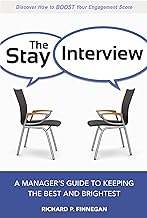Summary of "Former CIA Officer Will Teach You How to Spot a Lie l Digiday"
Summary of “Former CIA Officer Will Teach You How to Spot a Lie | Digiday”
This video features a former CIA officer, Susan, who shares insights and practical techniques for detecting deception in everyday and professional contexts. The session is interactive, involving audience participation, and focuses on understanding lying as a common human behavior, recognizing deceptive cues, and applying investigative mindset skills useful in hiring, retail, investigations, and negotiations.
Main Ideas and Concepts
- Everyone Lies: Lying is a common human behavior, ranging from harmless white lies to serious deception. On average, people lie about 10 times a day.
- Importance of Detecting Lies: Spotting deception is valuable in roles such as hiring employees, conducting investigations, negotiating deals, or managing retail operations.
- Deception vs. Nervousness: Distinguishing between nervousness and deception is challenging since both can produce similar behaviors.
- Methodology for Detecting Lies: A structured approach focuses on specific behaviors linked directly to questions asked, emphasizing timing and clusters of deceptive indicators.
Detailed Methodology / Instructions to Spot Lies
-
Analyze vs. Speculate - Avoid assumptions based on global or habitual behaviors (e.g., crossed arms). - Focus on behaviors that directly respond to specific questions (stimuli). - Observe changes or reactions immediately following a question, not random or unrelated movements.
-
Timing and Clusters - Look for deceptive behaviors occurring within the first 5 seconds after a question. - A single deceptive behavior is less conclusive; two or more behaviors (a cluster) within that timeframe strongly indicate deception. - Behaviors appearing before the question is finished can also count, as the brain processes faster than speech.
-
Ignore Truthful Behavior - Focus on spotting deception rather than confirming truthfulness. - Truthful answers can be used manipulatively to create a positive impression and mask lies. - Avoid the “halo effect” — assuming someone is truthful because of some truthful responses.
-
Recognize Evasiveness - Watch for answers that avoid the question or provide excessive unrelated information. - Failure to directly deny wrongdoing is a red flag; honest people tend to clearly deny false accusations.
-
Identify Exclusionary Qualifiers - Phrases like “for the most part,” “fundamentally,” or “not really” require follow-up questions to clarify what is being excluded.
-
Detect Aggression and Attacking Behavior - Defensive aggression or attacking the questioner or third parties can be signs of deception. - Overly hostile responses to simple questions are suspicious.
-
Convey vs. Convince - Distinguish between conveying information (simple yes/no) and trying to convince (long explanations, character statements). - Convincing statements such as “I’m a good employee” or “I love my children” often mask deception.
-
Watch for Referral Statements - Repeatedly referring to one’s good character or history to deflect suspicion can be deceptive.
-
Perception and Religious Qualifiers - Invoking religion or solemn oaths (“I swear to God”) can be manipulative tactics to enhance perceived honesty.
-
Perception Qualifiers
- Words like “honestly,” “frankly,” or “to tell you the truth” may be habitual but can also signal deception when clustered.
-
- Behavioral pauses longer than expected can indicate deception.
- Verbal and nonverbal mismatches (e.g., saying “yes” but shaking head “no”) are important cues.
- Anchor point movements: body parts that stay still (feet, back) serve as a baseline; movement away from these points can indicate stress or deception.
- Grooming gestures (fixing tie, hair, looking at watch) often dress up lies.
- Hands-to-face behaviors (scratching nose, touching ears) are common in stress or deception due to physiological responses.
Practical Examples and Case Studies
-
Interview with Jamie: An employee suspected of involvement in accounting irregularities. Audience members debated whether she was lying based on behaviors like face touching, foot tapping, and blinking. The presenter explained the importance of timing, clusters, and the difference between nervousness and deception.
-
Historical Cases:
- Scott Peterson’s inappropriate smiling when asked about killing his wife.
- Susan Smith’s failure to deny harming her children and reliance on convincing statements rather than direct denial.
Additional Tips
- Use pauses strategically after questions to encourage deceptive individuals to fill silence with revealing statements.
- In phone interviews, focus more on verbal cues since nonverbal cues are limited.
- Always ask follow-up questions when exclusionary qualifiers or evasive answers appear.
- Be aware of your own biases when interpreting behaviors.
Category
Educational
Share this summary
Featured Products

![Forensic Science- An Introduction to Scientific & Investigative Techniques (3rd, 09) by James, Stuart [Hardcover (2009)]](https://m.media-amazon.com/images/I/31zy+3wM7bL._AC_UY218_.jpg)

